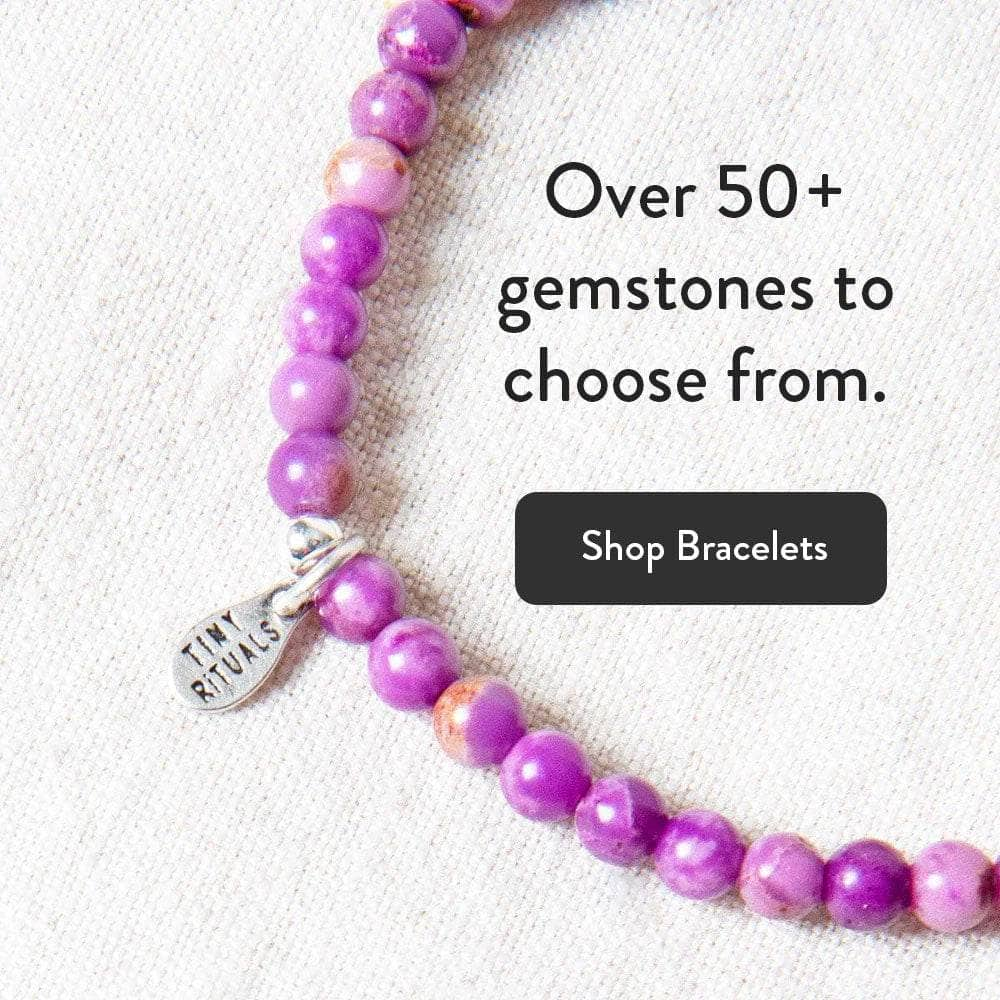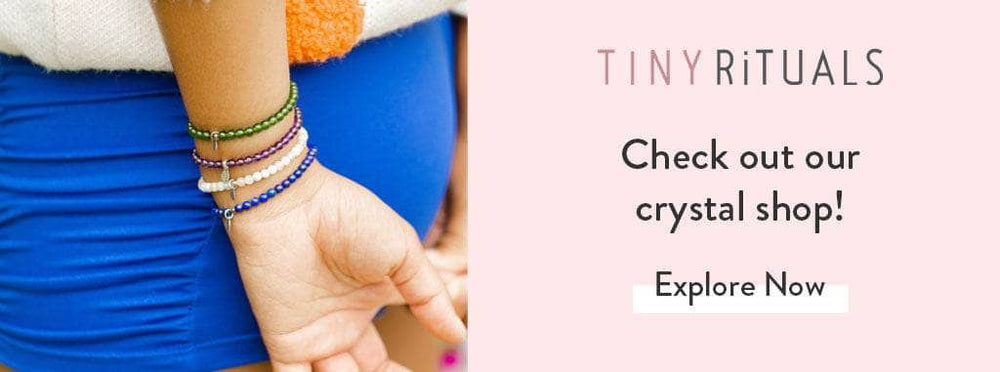
Stunning shades of blue and deep layers of cultural and spiritual meaning make the turquoise stone a significant crystal. This blue-green gem has long been revered as a healing tool with its ocean shades, cleansing energy, and sacred connotations. It was one of the first valuable gems to be mined back in Egypt in 600 BC. Since then, it has been a ceremonial stone for Aztec and Native American cultures, including the Navajo and Zuni people. Turquoise has been used to create amulets, talismans, jewelry, intricate inlays, decor, and more. This blue gem is a true beauty with its unique coloring and spiritual healing properties that point towards good fortune, truth, and washing away negative energy.
Understanding Turquoise
Composition and Formation: Turquoise is formed deep in the earth from the hydrated phosphate of copper and aluminum. The presence of copper adds to its spectacular color scheme. Natural turquoise tends to be born in dry and arid areas where groundwater swirls and percolates in copper-rich rocks, picking up particles of copper and aluminum as it flows. When the water dissipates, you are left with these trace elements, which blend with phosphate minerals to form turquoise.
Color Variations: One of the most striking features of turquoise is its stunning shades. These blue gems vary and can be anything from dark blue to green turquoise, and a whole spectrum of beautiful colors can be found shimmering within these natural stones. The presence of copper grants turquoise its precious hue, and if iron is present instead of aluminum, this also impacts the color scheme and takes the turquoise more toward green. Zinc can also have a shaded impact. The matrix of different minerals and chemical composition lends the turquoise stone its unique look.
Historical Uses: Turquoise has been around for centuries and has been celebrated and revered in various cultures spanning that time period. The Ancient Egyptians were smitten by these blue-green stones and the tomb of the famed pharaoh Tutankhamun is inlaid with turquoise treasures. In Ancient Persia, turquoise was believed to have protective properties, and it shows up in arts and interior decor across mosques and palaces. Native American tribes, especially in the southwest of the USA, believe that turquoise is a sacred stone and often use it in their craftmanship to welcome luck and protection.
Main Types of Turquoise

Bisbee Turquoise
Found in Arizona, the Bisbee Turquoise was only mined briefly in the Laender Pitt Copper mine. It is famed for its deep blue coloring and smoky matrix with chocolate hues. The district's contrasting color of the blue and brown matrix gives it a special look, and the fact that it is known to be a hard stone makes it a perfect choice for high-quality turquoise jewelry.
Kingman Turquoise
Kingsman Turquoise has a regal feel and comes from one of the oldest mines in Arizona, specifically the Mineral Park Mine. This popular type of turquoise is famed for its vibrant blue color and for being available in large quantities. The stone can range from pale to intense blue, sometimes exhibiting a spiderweb matrix pattern. Due to its sacred elements, ease of accessibility, and hardness, Navajo and Zuni artisans often use Kingsman turquoise to create Native American jewelry.
Sleeping Beauty Turquoise
Prized for its solid, light blue color and little to no brown or black matrix, the Sleeping Beauty Turquoise has a fairytale name from the mountain where it is found - the Sleeping Beauty Mine near Globe, Arizona. Its super smooth texture and solid coloring give it a special edge and make it a firm favorite choice of stone for those crafting sleek and modern turquoise jewelry designs.
Morenci Turquoise
The iron pyrite inclusions in Morenci Turquoise give it a fascinating and distinct matrix and a glittery effect thanks to its blue and metallic flecks - like sunlight sparkling on the sea. This American turquoise is also mined in the Morenci area of Arizona and is a popular stone choice for Native American jewelry designs. The presence of pyrite running through the veins of Morenci Turquoise makes it a highly sought-after stone.
Royston Turquoise
Royston Turquoise is mined in the Royston mining district near Tonopah, Nevada. It comprises a range of colors spanning royal blue to dark green; all swirled with a black or brown and gold matrix. This evocative color pattern makes Royston an enchanting variety of turquoise, which is why it is also used in artistic jewelry design.
Carico Lake Turquoise
The Carico Lake Turquoise is a unique stone known for its rare lime green hues. It takes its special shades from the high zinc content found in the mines near Carico Lake in Lander County, Nevada. Holding one of the more unusual colors of turquoise makes this kind a fascinating favorite in traditional and contemporary jewelry designs. The spring shades, intricate matrix, and the fact that it can be difficult to cut make it a high-grade turquoise stone that collectors crave.
Rare and Unusual Types of Turquoise

Lander Blue: Lander Blue is one of the finest turquoise stones and is highly valuable. It is mined in limited quantities from the Lander County Mine in Nevada. It has a deep blue color and a fine spiderweb-like black matrix, giving it a stunning pattern and striking overall finish. Lander Blue turquoise also has an exceptional hardness, making it a high-quality turquoise for all kinds of jewelry - especially high-end. Because of its rarity, Lander Turquoise is a symbol of exclusivity.
Cripple Creek: Cripple Creek Turquoise was found as a byproduct of gold mining in Colorado. A beautiful surprise, this gem has intriguing green shades and offers a stunning alternative for those who covet a different color of turquoise to the usual blue hues. While it may not hold as much cultural significance as other kinds of blue stones, there is still something rare and unusually special about the Cripple Creek kind - making it appealing to those who want valuable turquoise with its own unique look.
Persian Turquoise: Persian turquoise is a sight for sore eyes. It's robin egg blue shades. Historically mined in Iran, Persian turquoise is often free from any brown matrix and has minimal veining, which gives it purity and clarity that is not present in many other types of turquoise. As it has been mined for thousands of years, Persian turquoise is revered and holds deep historical importance. It has long been used in royal jewelry and religious artifacts.
Factors Affecting Quality and Value
Matrix Patterns: The matrix is the host rock that affects the appearance and the value of your turquoise stone. The matrix is an important element of the overall appearance of turquoise. The matrix affects the pattern that forms across the stone's surface. You can have a spider web matrix, a heavy matrix with striking contrast and a dramatic appearance, or a minimal matrix that merely hints at something else beneath the surface. It can show up in dark brown shades, golden brown or black. Turquoise stones with a high-quality matrix - a pretty pattern that adds to its appeal are often more prized and valuable than those with a poor matrix - a pattern that is too dark or dominant and retracts from the aesthetic appeal of your stone.
Treatments: Turquoise is often treated as a relatively soft stone and can be quite porous. Therefore, it often needs to be treated to stabilize it and make it suitable for use in jewelry and decor without easily being damaged. Stabilization treatments can include infusing it with a clear resin so that it hardens and becomes more durable. While this enhanced turquoise process can detract from the value of natural turquoise, it is commonly and widely accepted in the market. Dying turquoise to elevate its natural color and lend a little more drama to the stone is also not uncommon. Dyed turquoise is less valuable as, over time, the dye can fade or take away from the authentic natural beauty of the stone.
Scarcity: Like all gemstones, the more rare a version of the stone is, the more valuable it is. Versions of turquoise like Lander Blue and Sleeping Beauty are rarer than stones that come from the largest turquoise producers, which gives them a higher price point. This can be especially true where mines may have closed, and the chance of getting that gem again has diminished.
Caring for Turquoise Jewelry

Cleaning and Storage: Caring for turquoise jewelry can keep it looking bold and beautiful. As turquoise can be a soft stone, its important to take a little extra TLC to ensure no damage occurs. The most important point to remember is to avoid using abrasive or harsh elements to clean your turquoise. While it should be regularly cleansed, you want to use a soft brush, a soft cloth, and mild soap for gentle cleansing. Be sure to avoid soaking your turquoise stone in water long term as it is a porous stone and may hold liquid, leading to color and structural changes.
When not using or wearing your turquoise jewelry, you should store it separately away from harder stones that can chip or scratch the surface of your precious turquoise. Place jewelry or stones in their own bags or boxes and place them in a cool and dry spot - away from direct sunlight. Humidity control can be an important part of caring for your turquoise, as excessive moisture can lead to your gem cracking over time.
Avoiding Chemical Damage: One of the most important care tips for your turquoise is to avoid chemical exposure, as this can alter the beautiful coloring of your gem. Cosmetics, lotions, household chemicals, cleaning solutions, and even cupboard staples like vinegar and acidic elements can all interact with your gemstone and cause the color or surface to become damaged. Always remove turquoise rings or bracelets when cleaning or showering.
Conclusion
Turquoise is a truly special stone, and with so many varieties on the market, you can choose turquoise jewelry and decor that suits your aesthetic choice. From deep blue hues with golden spiderwebs etched across the surface to turquoise that is more greenish in hue and has little to no matrix, exploring the world of turquoise is truly fascinating. Whether you are a collector, a jewelry maker, or just someone drawn to this gemstone, turquoise's diversity and beauty are ever-captivating. Explore our crystal shop for turquoise gemstone bracelets, worry stones, spiritual necklaces, and birthstone necklaces.
FAQs
How many different types of turquoise are there
While everyone may know what turquoise looks like from the largest producers, there are almost thirty different types of turquoise. With a range of names and kinds and coming from different mines around the world, the landscape of turquoise is quite rich and varied with different colors, patterns, and kinds.
What is the rarest type of turquoise
Lander Blue is one of the greatest types of turquoise. This kind of turquoise comes from Lander Country Mines and has a black spiderweb matrix across its surface. The intense, brilliant blue coloring and the stone's fine markings make it a special gem from American mines.
Which turquoise is most valuable
One of the most valuable kinds of turquoise is Persian turquoise. It is ancient, has an intense shade of robin egg blue, and is highly sought after by collectors, artisans, and turquoise enthusiasts.
What is the highest grade turquoise
The highest grade of turquoise is natural, untreated, and of superior quality. Sometimes, it is awarded AAA status, a grading system that indicates that this kind of gemstone has been chosen because of its superior coloring, lack of inclusions, and excellent cut.













